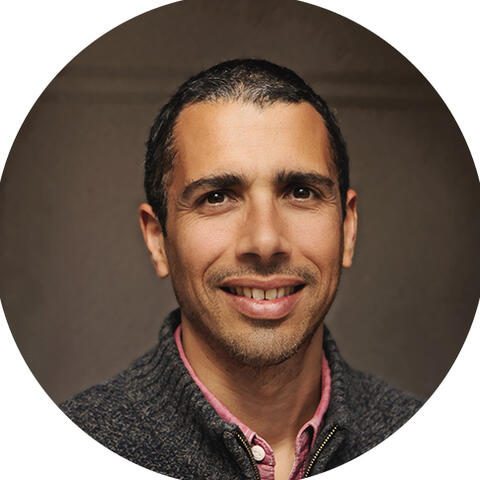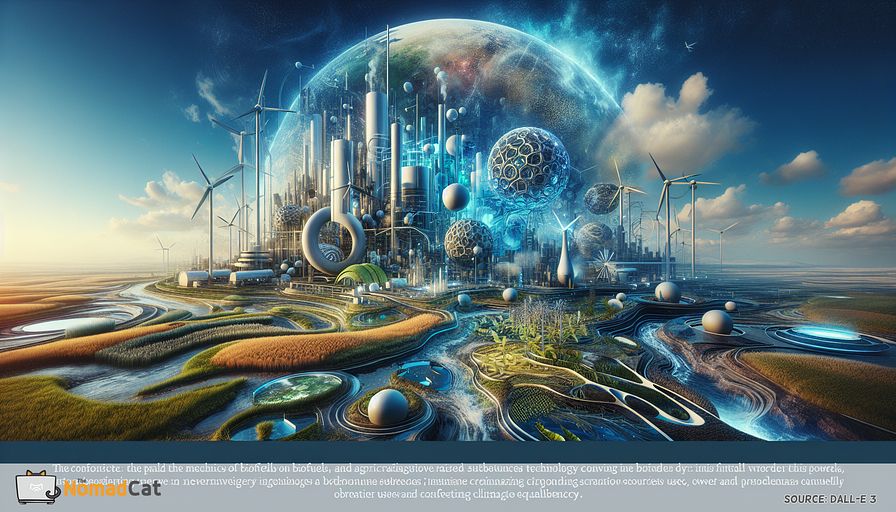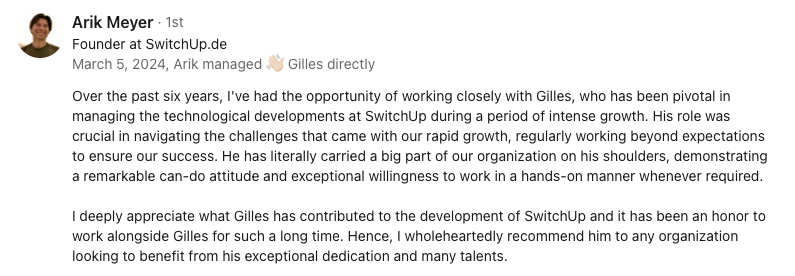Abstract:
As the world seeks cleaner, more sustainable energy sources to combat climate change and reduce reliance on fossil fuels, biofuels emerge as a promising solution. This article explores the advancements and challenges in the biofuel industry, focusing on the various sources of bioenergy, including plant-based materials and agricultural waste. It highlights the environmental benefits of biofuels, such as lower greenhouse gas emissions compared to traditional fuels, and discusses the role of biofuels in the global energy transition. The technology behind converting organic materials into energy is examined, as well as the economic and social implications of widespread biofuel adoption. Despite challenges such as land use and the energy balance of biofuel production, the continuous innovations in this sector offer a hopeful outlook for biofuels as a key component of sustainable energy strategies.
Fueling the Future with Bioenergy
Introduction to Bioenergy and its Global Importance
Amid the swirling discussion about climate change and the urgent need for sustainable energy options, bioenergy emerges as a beacon of hope. As your Chief Technology Officer, I've delved into various energy solutions, but bioenergy stands out with its promise of manifold benefits. It harnesses power from Earth's biological resources—think plants, animal waste, and even industrial byproducts—to churn out clean, renewable energy that could power our world towards a cleaner future.
In our trek towards energy transition, understanding bioenergy's role is crucial. Today, let’s explore the intriguing world of bioenergy, starting with its diverse sources from organic materials. We’ll examine the technological leaps we have achieved in harnessing this energy, and not to be overlooked, the environmental and economic impacts of biofuels. These discussions aim to provide a lucid picture of how bioenergy could be pivotal in our sustainable energy puzzle.
We know that embracing new technologies isn't just about the 'cool factor'. It involves a serious evaluation of benefits versus risks. However, with bioenergy, the scales tip heavily towards advantages, offering us a chance to reduce greenhouse gas emissions while generating economic growth. Sharing insights from personal experiences and global studies, we will peel back the layers to reveal how bioenergy can be integrated into our daily lives and industrial processes. Pack your gear; we’re on a journey to energize our future sustainably!
Sources and Technology of Bioenergy
The Cornucopia of Bioenergy Sources
Traversing the treasure trove of bioenergy sources begins with the plant kingdom. Biomass from perennial grasses, fast-growing trees, and leftovers from agricultural staples like sugarcane and corn provides a robust foundation for bioenergy production. Yet, the sphere of resources extends beyond the fields; agricultural waste such as manure, crop residues, and waste vegetable oils also play starring roles in this green narrative. A personal favorite example is the tale from the sunflower oil industry, wherein our firm navigated the sticky job of transforming used sunflower oil into a sprightly biofuel, much to the delight and skepticism of the traditionalists.
Moreover, as our networks widen, we observe how algae, an oft-overlooked player, sways into the spotlight. Cultivated in ponds or controlled tanks, these aquatic organisms yield an impressive biomass output per acre, hinting at algae's promising bravado in revolutionizing bioenergy sources.
Technological Wizardry in Bioenergy Conversion
Forging ahead from raw materials to energy production, it's the technological wizardry in bioenergy conversion that clinches the magical transformation. Traditional methods like fermentation still enjoy top billing in our industry, with immense respect. Fermentation's ability to convert sugary substances into bioethanol has us often joking – albeit half-seriously – about orchestrating a wine to wattage production line!
Yet, it is through contemporary advances like gasification and anaerobic digestion that bioenergy finds its stride. Gasification transforms solid biomass into a combustible gas mixture—a nuanced process that reminds me of my first chemistry set, albeit on a dramatically larger scale. Anaerobic digestion, on the other hand, capitalizes on microbial activities to break down organic matter, producing biogas, a versatile contender in the energy market. The scent of success in this field isn't always pleasant but the output notably is!
In the arena of innovation, the development of genetically engineered enzymes that enhance the breakdown of cellulose is particularly thrilling. Reflecting on a recent breakthrough, a leading scientist at an international bioenergy conference illustrated how these engineered marvels boosted ethanol yield by a staggering 50%. Her excitement was palpable, as she quipped, "We're not just making better fuel, we're reengineering the fundamentals of fermentation!" This milestone not only exemplifies the kind of innovative spirit driving our field but also underscores the potential for monumental efficiency gains.
To encapsulate, the journey through the sources and technology underpinning bioenergy unearths a narrative of continual innovation and resource diversity. From sunflower oil to engineered enzymes, each element narrates a part of the broader story, showcasing the versatility and viability of bioenergy. As we stride further into this journey, the fusion of traditional practices and modern technology continues to ignite new pathways, promising a brighter, cleaner energy future.
Environmental and Economic Impacts of Biofuels
The Environmental Narrative: Beyond Greenhouse Gases
When pondering biofuels, one might quickly picture a greener planet, a sigh of relief from Mother Nature as we shift away from fossil fuels. Indeed, biofuels present an enviably cleaner option, significantly slashing the amount of greenhouse gases emitted into our already-burdened atmosphere. As a CTO who has witnessed firsthand the smog blankets enveloping bustling cities, adopting biofuels feels akin to airing out the world's dirty laundry—this time, it genuinely cleans up our act. Calculations from several bioenergy projects have shown reductions, sometimes by over 60%, in carbon emissions when compared to traditional fossil fuels.
Beyond just numbers, the real-world implications for global climates are immensely positive. Utilizing biofuels can be likened to putting the planet on a diet from harmful emissions (and who doesn't love a good health plan?). However, it's not without its challenges. The land required to cultivate biomass must be balanced carefully with the need to conserve wild habitats. Excessive land use could lead to deforestation, potentially offsetting the benefits of reduced emissions. It's a delicate dance, like choreographing an eco-friendly ballet, where each step must be perfectly positioned for environmental harmony.
Economic Impacts: A Fiscal Symphony
The transition to biofuels isn't just a boon for our environment but strikes a powerful chord in the economic orchestra as well. From my perspective in the executive suite, shifting towards bioenergy opens up a myriad of economic opportunities. Imagine the establishment of new companies focused on biofuel production, technology development, and logistics. This isn't merely a shift; it's an industrial evolution, brewing potent pots of job opportunities at every turn. Particularly in rural areas, biofuel plants can catalyze local economies, transforming sleepy towns into buzzing hives of green energy production.
From a broader prism, the penetration of biofuels into markets can stimulate global trade, with countries exporting surplus biomass and technology. This can be especially transformative for developing nations, which can exploit abundant agricultural and organic resources to catapult onto the global bioenergy stage. Picture an agricultural farmer; yesterday, he worried about market prices for his crops, but today, he stands as a vital player in the energy market, his crops and by-products fueling not just cars but local economies.
- Job Creation: The biofuel industry fosters employment from farming to factory floors, invigorating job markets.
- Economic Growth: As more nations and companies invest in biofuel technologies, the resultant tech advancements and increased biofuel demand foster economic growth.
Navigating Challenges
Yet, adopting biofuels industry-wide isn't as seamless as flipping a switch. The aforementioned land use issue is just the tip of the iceberg, or should I say, the leaf of the biomass? For example, the cultivation of crops solely for biofuels might compete with food production, potentially elevating food prices and sparking unintended social consequences. It's a complex equation where the variables of economic, environmental, and social factors must be balanced with the precision of a seasoned alchemist.
In conclusion, enhancing our reliance on bioenergy could dramatically reshape our planetary health and economic structures for the better. But as with any major transformation, the path is strewn with both opportunities and obstacles. Treading this path requires not just technological innovations but a deep commitment to navigating the economic and ecological impacts thoughtfully. As we progress, it's akin to nurturing a garden: it takes time, care, and a lot of green thumbs—both metaphorically and literally.
Future of Bioenergy and Conclusion
Charting the Path Forward for Bioenergy
Looking towards the horizon, the trajectory for bioenergy appears not only hopeful but vibrant with potential. As your Chief Technology Officer, I stand at the crossroads of innovation and tradition, recognizing that the road ahead for biofuels is paved with advanced technological inventions and strategic enhancements. The persistent pulse of progress in our field suggests that the solutions of tomorrow are being seeded today.
With ever-improving technological tools, from enzymes that supercharge biomass breakdown to artificial intelligence models that optimize fuel production lines, our progress is steadfast. It feels a bit like being a magician, where every new innovation is a trick up our sleeve, delighting and bewildering by turns. Yet, there's a serious component to our endeavors, as each step forward could mean significantly better energy solutions for our planet.
The Undeniable Potential of Bioenergy
Reflecting on the discussions we've traversed, the narrative of bioenergy as a linchpin in sustainable energy strategy is compelling. From the vast buffet of bioresources like algae and sugarcane to the wizardry of waste-to-energy technologies, each element contributes to a larger vision of a greener, cleaner future. Our journey exploring the environmental and economic symphony played by biofuels has underscored its crucial role—not just as an alternative, but as a primary player in the energy sector.
The global stage is set for nations, companies, and innovators to forge partnerships that drive the bioenergy sector forward. As leaders in technology and industry, we carry the torch, not just illuminating the path but also warming the global hearth with sustainable, bio-based fires. The potential ripple effects—reducing greenhouse gas emissions, invigorating economies, and transforming rural landscapes—are monumental.
A Thought to Fuel Discussions
Yet, as we stand poised to push the boundaries of what bioenergy can achieve, one wonders how swiftly and seamlessly we can integrate these resources into the everyday fabric of society. Will our future cities buzz with biogas-powered vehicles and industries? Can our agricultural sectors evolve to become not just food baskets but energy hubs as well? These are not just idle thoughts but pivotal questions that could define our environmental legacy. As I often muse with a touch of mirth in board meetings, are we ready to turn our wine into wattage and our crops into kilowatts?
It is clear that the role of bioenergy in driving a sustainable future is both vital and vibrant. Engaging with this green energy source offers a promising avenue to address some of our most pressing environmental challenges while energizing economies across the globe. As we continue to advance and innovate, let us do so with the awareness that each step in bioenergy development is a step towards a more sustainable and prosperous planetary future. So, as you reflect on this shared journey, consider how you, too, might contribute to a cleaner, greener tomorrow.














